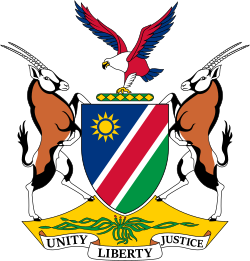 |
|---|
The Namibian Ministry of Mines and Energy (MME) was established at Namibian independence in 1990. [1] The first Namibian minister of mines and energy was Andimba Toivo ya Toivo, a liberation fighter posthumously declared a national hero of Namibia. [2] The current [update] mines and energy minister is president Netumbo Nandi-Ndaitwah, after Natangwe Ithete was dismissed on 26 October 2026. [3]



